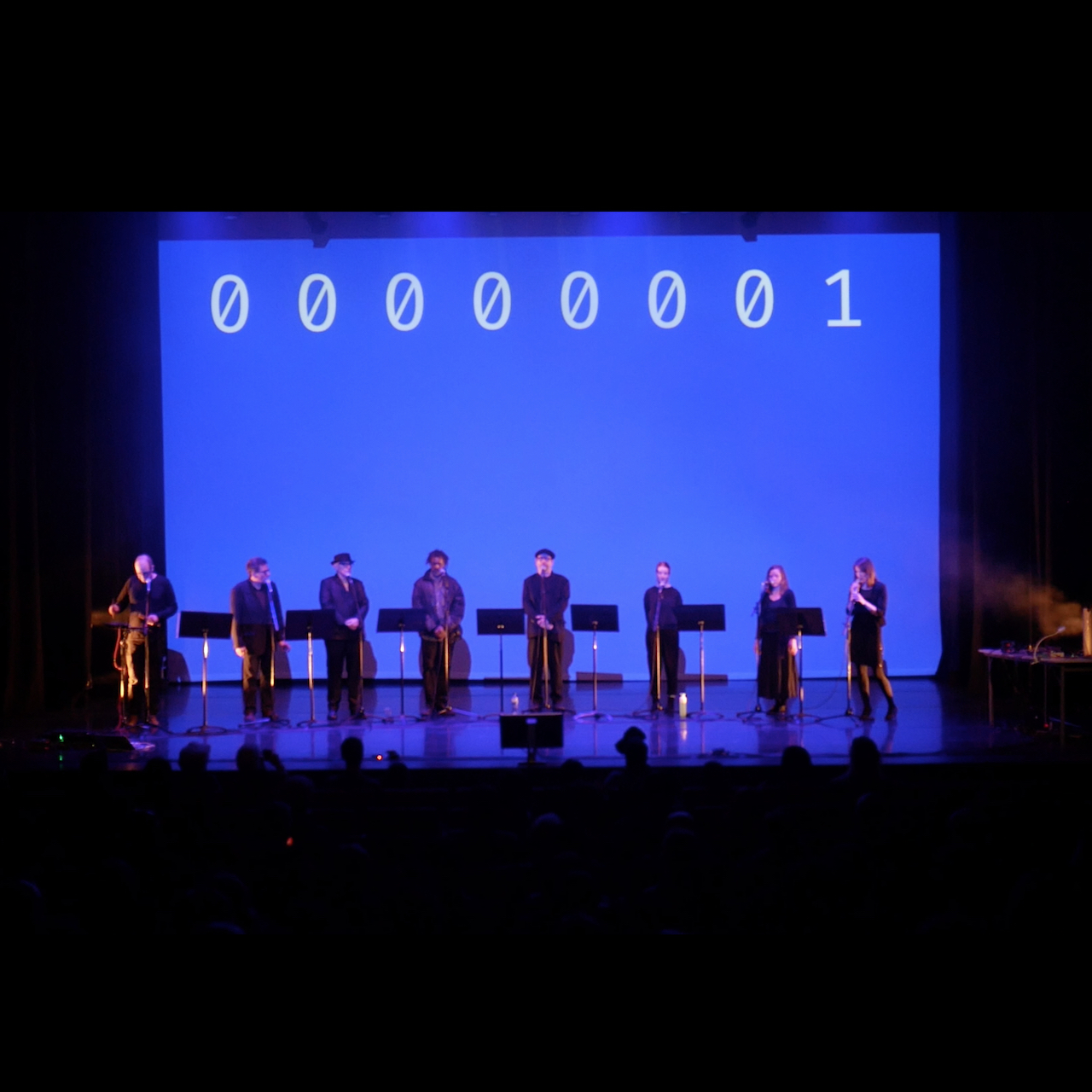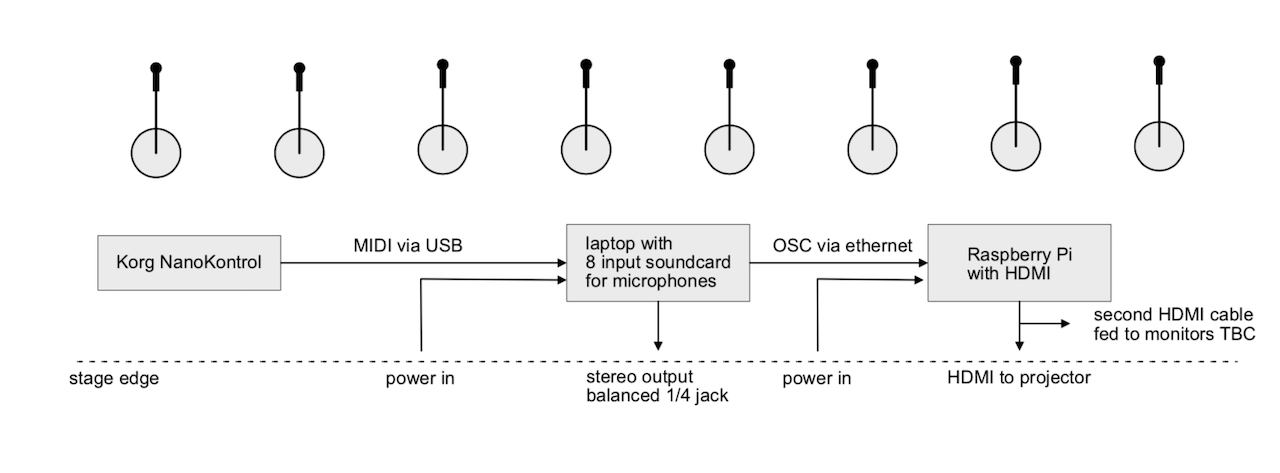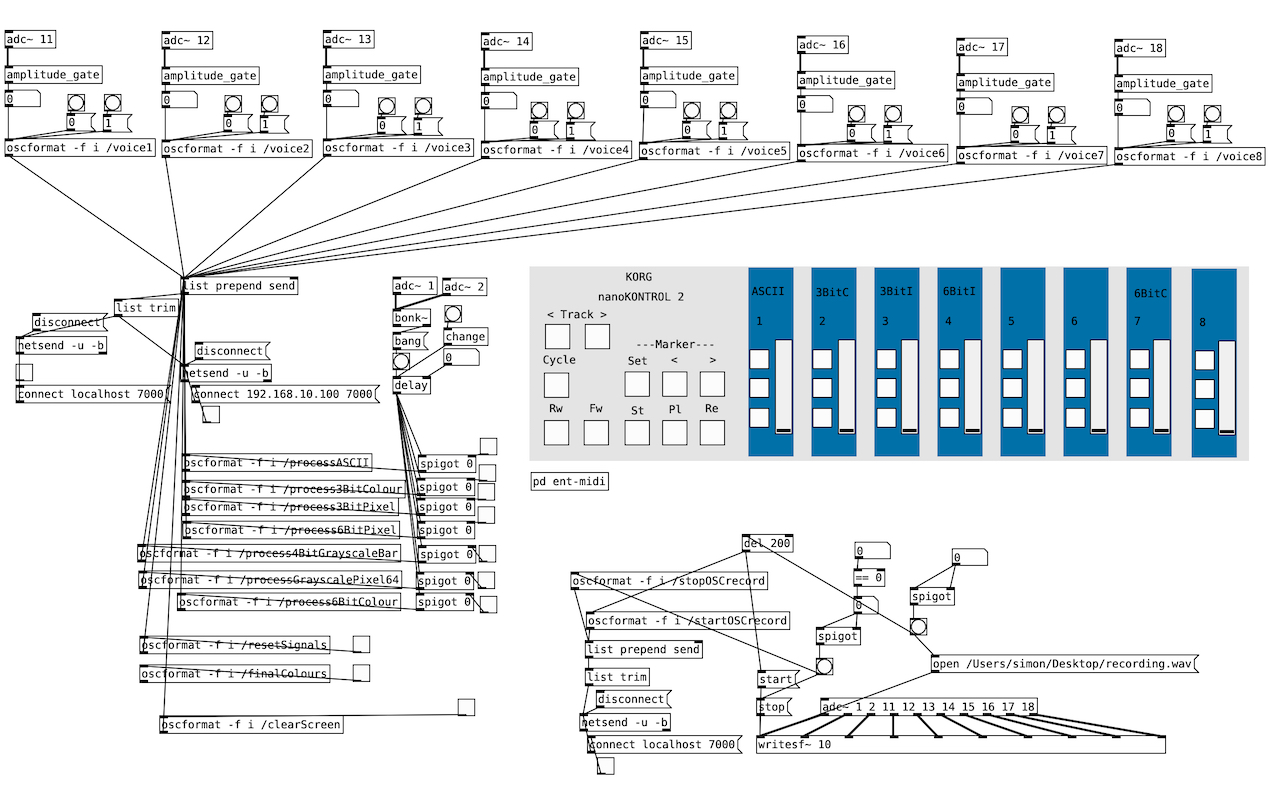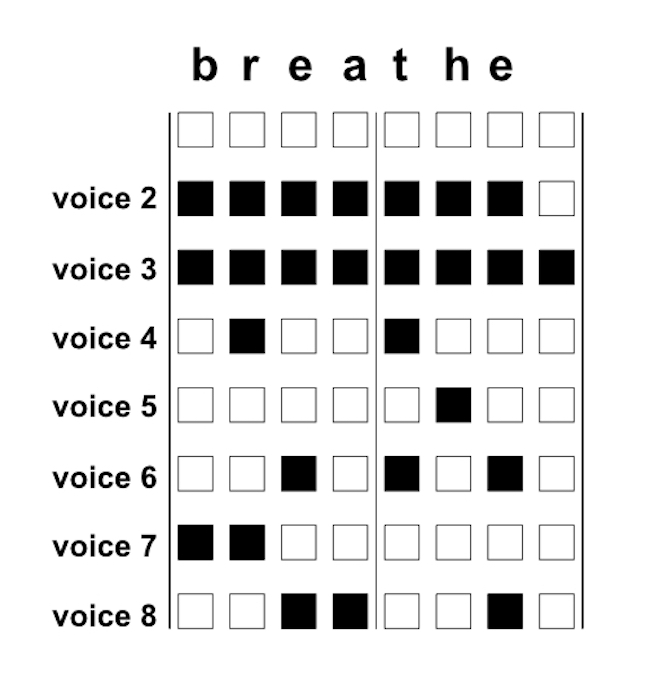Parallel Voices 2019
a performance for eight vocalists and a single channel projection.
In this work I recreated an 8-bit computer parallel bus in software. Each bit (zero or one) was controlled by the volume of each singer’s voice. The different combinations of the voices produced text, colours and images. The visual information generated through the actions of the singers was projected on a large screen behind the performers.
The following video documents a complete performance of the work that took place at the Lowry, Salford on 17th November, 2019. It was commissioned by Manchester- based organisation called Drift. The singers were a Manchester based group called Vocal Harum, in addition to Kelly Jayne Jones, Anthony Watt and myself.
Parallel Voices - The Lowry Salford, 2019
Structure of the piece
The work was made up of eight sections that were developed during rehearsals. The singers followed a simple score that will be described further below. In section one we established the relationship between the singer’s voices and what was happening on screen. Each singer took in turn to sing into a microphone, and this corresponded with a bit which was projected above their head, changing on the screen. In section two, each time I tapped a drum pad the state of the zeros and ones was interpreted by the computer software and processed into a letter. At first these letters were random but as the singers started to work from a predefined score we repeated the word ‘breathe’, sometimes getting it right and sometimes getting it wrong.

In section three we produced full screen 3-bit colour with the Therefore singers located on stage left. With three bits it is possible to produce the following eight colours.
000 = black, 001 = blue, 010 = green, 011 = cyan, 100 = red, 101 = magenta, 110 = yellow, 111 = white


In section four we produced large pixels first using the same three bits. Here the singers sang a particular pattern, working through the colours sequentially in order to produce the following test stripes.

In section five we produced a very crude 6-bit pixilated image where we worked through different combinations of singers to produce the different colours.

Finally, we tried random shades, grey bars, and whatever would be generated by the singers singing whatever they wanted.



Technical setup
The following image and downloadable link illustrates the technical setup.

The eight signals from the microphones and the trigger input went into a sofware patch built in Pure Data. This analysed the amplitude of each voice and when it reached a determined threshold the bit changed state from zero to one. This change was sent as an OSC message to a Raspberry Pi computer which ran the software written in OpenFrameworks. This software converted the bits into bytes and produced the text and visuals. This purposefully kept all the audio signals away from any interference from the HDMI cable and allowed for flexible testing.

Software tests
An additional advantage of having the software that processed the visuals on a different computer was that it enabled me to run tests with computer versions of the singers. The video below is a compilation of some of these.
Parallel Voices - software tests, 2019
Score
The piece was intended to be performed by a group and to be accessible to people with a range of musical abilities, so a grid system was used allowing each vocalist to see their part in relation to the others and broken into 4/4 time.
